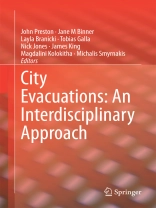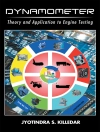Evacuating a city is a complex problem that involves issues of governance, preparedness education, warning, information sharing, population dynamics, resilience and recovery. As natural and anthropogenic threats to cities grow, it is an increasingly pressing problem for policy makers and practitioners.
The book is the result of a unique interdisciplinary collaboration between researchers in the physical and social sciences to consider how an interdisciplinary approach can help plan for large scale evacuations. It draws on perspectives from physics, mathematics, organisation theory, economics, sociology and education. Importantly it goes beyond disciplinary boundaries and considers how interdisciplinary methods are necessary to approach a complex problem involving human actors and increasingly complex communications and transportation infrastructures.
Using real world case studies and modelling the book considers new approaches to evacuation dynamics. It addresses questions of complexity, not only in terms of theory, but examining the latest challenges for cities and emergency responders. Factors such as social media, information quality and visualisation techniques are examined to consider the ‘new’ dynamics of warning and informing, evacuation and recovery.
Tabella dei contenuti
City Evacuations: their pedagogy and the need for an inter-disciplinary approach.- Unpacking the impacts of social media upon crisis communication and city evacuation.- Simulation of information spreading following a Crisis.- Quantitative decision-making rules for the next generation of smarter evacuations.- Decentralized optimisation of resource allocation in disaster management.- A Semi-automated Display for Geotagged Text.- Conclusion: evacuations and transmedia vulnerability.












